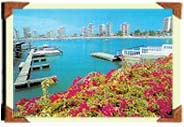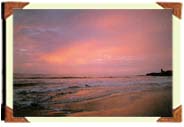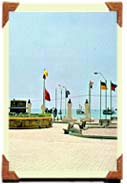| GUAYAS |




Guayaquil, the Pearl of the Pacific, is a city of two million inhabitants and the economic capital of Ecuador, an honor it has earned thanks to its untiring commercial activity which has been the leading force its progress since the beginning of the century.
Guayaquil and its surroundings invite the tourists to tour the city and visit pleasing sites, a contrast between old and new where they will find a large selection of crafts and manufactured products in general.
The Cerro del Carmen and Santa Ana, hilltops from where you have a view of the city and of the convergence of the Daule and Babahoyo rivers which together form the Guayas River. The Bridge of National Unity is the largest in country, crossing the Daule and Babahoyo river
| At the top of the Cerro del Carmen, you will find the Monument to the Sacred Heart of Jesus blessing the city and at the foot of it the General Cemetary, also called "The White City" . It is considered the most beautiful in America because of the large number and the quality of its sculptures, it has more than 80 monuments made of Carrara marble imported directly from Italy. |  |
The Church of Santo Domingo, was tthe first church of this city. The Basilica de la Merced, San Francisco and the Metropolitan Cathedral should also be visited.
| The Malecon Simon Bolivar, which runs along the River, is also called "El Paseo de las Colonias". The Public Clock (Moorish Tower), Municipal Palace (City Hall) of neoclassic style is considered one of the best architectonic works of the city, The "Hemiciclo de la Rotonda" where a great marble and bronze statue is erected, conmemorating the meeting between two great liberators in America: Simón Bolivar and San Martin. | 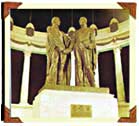 |
If you like excursions, we should like recommend a visit to Cerro Blanco. Situated on Km. 15 on the coast road it is a representative sample of tropical dry forest and constitutes an important refuge for more than hundred and ninety species of land birds and six species of sea birds.
 |
Parque Centenario a beautiful park in the middle of the city, in the center of which stands the Column of October of Liberty. |
| The Centro Civico Theater; the Planetarium of the Navy and Puerto Maritimo, one of the most important ports of South America on the Pacific Ocean where ships from all over the world dock. | 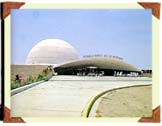 |

